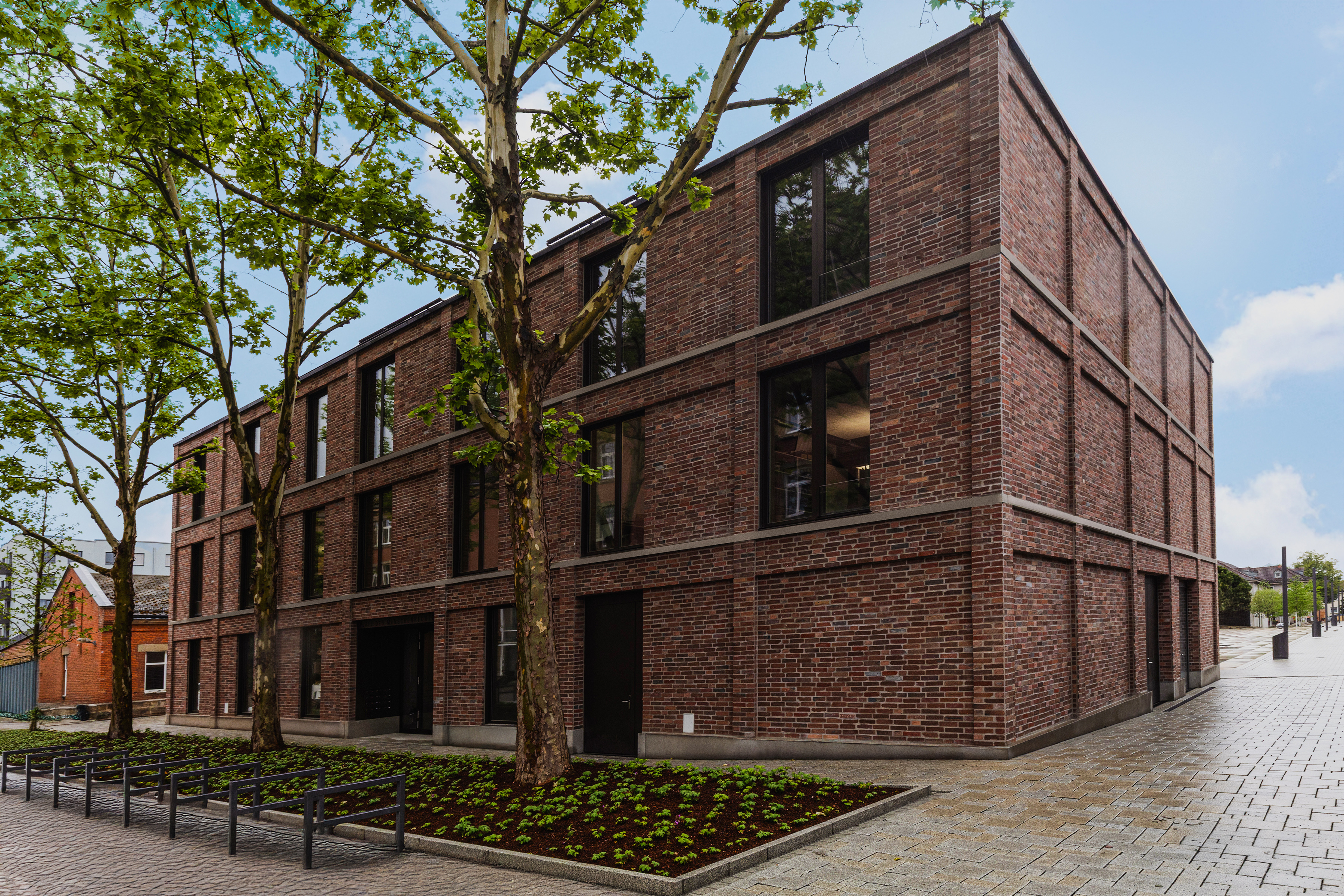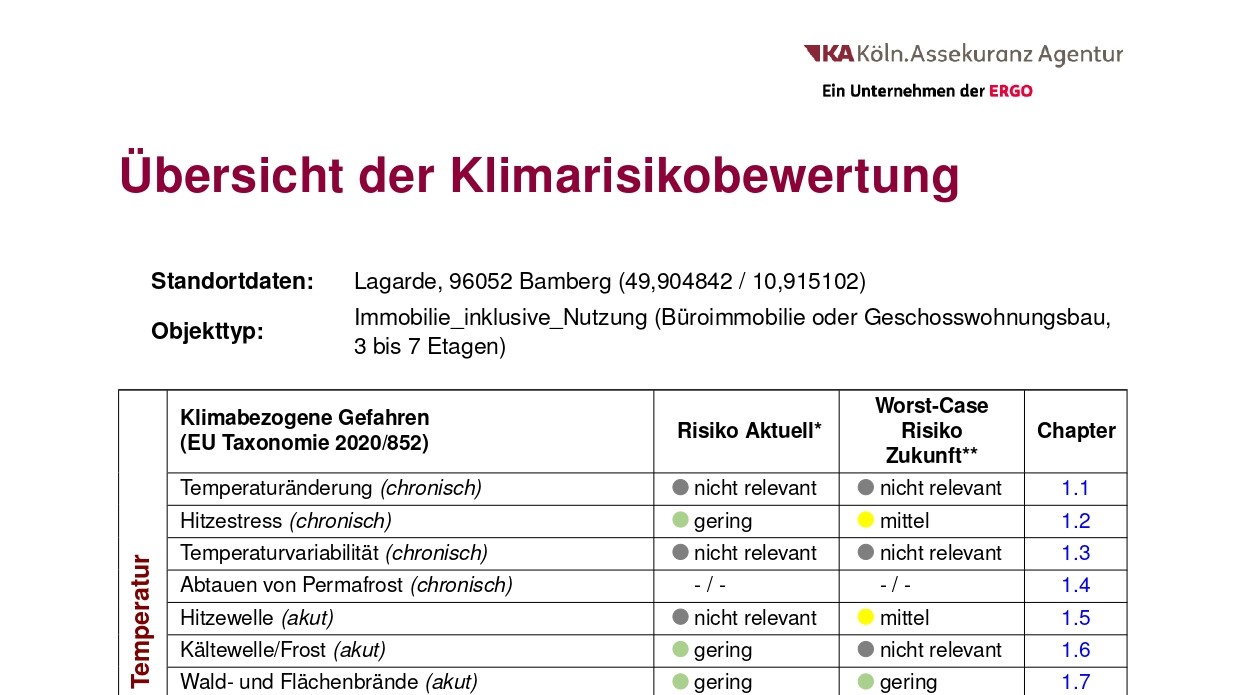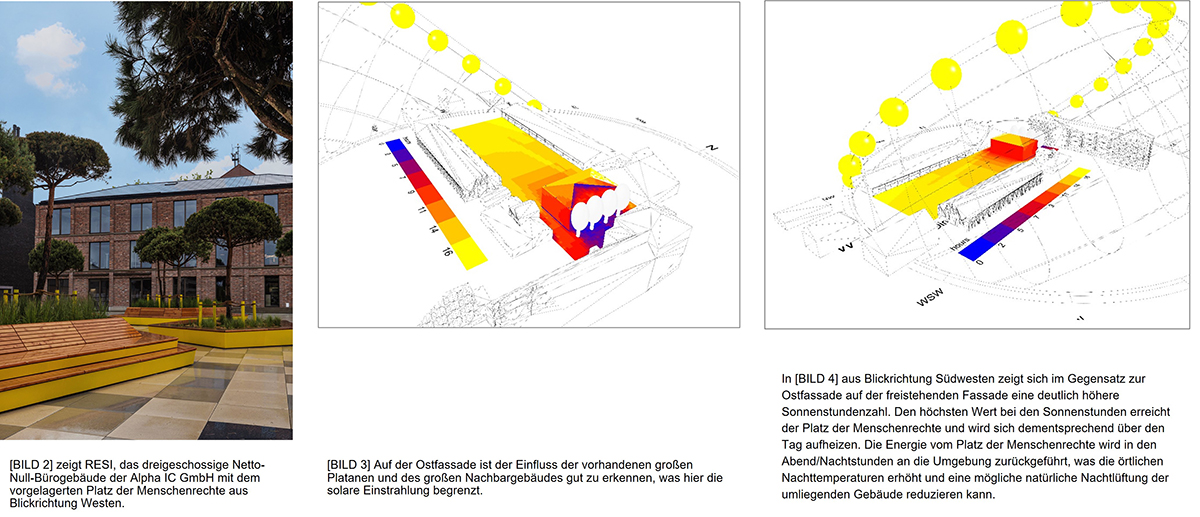We have prepared a climate risk and vulnerability analysis not only for customer projects, but also for the new net-zero company building of Alpha IC GmbH in Bamberg, known as RESI. This is vital and safeguards the value of buildings in order to plan, construct or revitalize them in such a way that they are equipped for increasing climate risks over their entire life cycle and user comfort is ensured.
Alpha IC GmbH has been working successfully with KA Köln.Assekuranz Agentur GmbH on this topic since last year. The latter uses its K.A.R.L.® analysis tool to prepare a taxonomy-compliant climate risk and vulnerability analysis. In a second step, the Alpha IC team then evaluates the adaptation solutions and advises on further necessary measures with regard to EU taxonomy requirements.
Initial situation and risk assessment with K.A.R.L. ®
For the RESI, the risks of heat stress (chronic) and heatwave (acute) for the location resulted in a medium risk in the future, which corresponds to level four out of five. You can see an excerpt from the evaluation here:
According to K.A.R.L., heat stress is defined as the general burden on people and the environment caused by persistently high temperatures. The risk assessment is based on a heat stress index developed by KA Köln.Assekuranz Agentur GmbH and on the associated harmful effects on the object under investigation (vulnerability). The heat stress index primarily refers to the duration of heat waves, which pose a particular risk due to persistently high temperatures both during the day and at night. The index values range from 0 to 10, with 0 indicating no heat stress and 10 describing extremely stressful and frequently recurring situations with high temperatures.
With a heat stress index of 2.3, the investigated site on the Bamberg Lagarde Campus currently has a low level of heat stress. In combination with the corresponding building vulnerability, this results in a low risk for the building and its users.
The climate outlook with the K.A.R.L. analysis tool shows possible future developments of the heat stress index for the RESI, which were calculated based on an ensemble of 20 global climate models for the site. A maximum heat stress is projected for scenario SSP5-8.5 and the period 2070-2099 with a value of 5.6, which corresponds to an increased load. Scenario SSP5-8.5 (Shared Socioeconomic Pathways) describes the strongest increase in emissions and is often referred to as the “business as usual” scenario. For the maximum projected heat stress, a medium harmful impact on the study object is to be expected due to the selected vulnerability. This results in a medium risk.
By definition, a heatwave is a period of unusually hot weather that is particularly stressful for people and the environment. For the purposes of the analysis, a heatwave is deemed to exist if the maximum daytime temperature exceeds 30 ◦C on at least three consecutive days (“hot days”) and the night-time temperatures do not fall below 20 ◦C (“tropical nights”). The risk determination is based on the average number of heatwave days per year at the location and their harmful effects on the object under investigation (vulnerability). The selected reference period (1985 - 2014) was still comparatively little affected by climate change, which meant that the probability of heatwaves occurring was significantly lower.
Future developments were calculated for the RESI site based on an ensemble of 20 global climate models. The climate outlook shows a significant increase of +14.8 heatwave days per year on average for the period 2070-2099 compared to the reference period. Taking into account the selected vulnerability, the maximum projected heatwave days are expected to have a medium damaging impact on the study object. This results in a medium risk overall.
Measures to prevent harmful climatic influences on the building and its users
The experts at Alpha IC now had to mitigate the effects of the two identified risks by taking suitable measures in the planning and construction phases in order to prevent a harmful impact on the building and its users. The two risks of heat stress and heatwaves are associated with high temperatures at peak times and for long periods. These temperatures can increase due to the environment (materiality and sealing) and its (re)effect from solar radiation. Alpha IC has looked at and evaluated the influence of solar radiation for the RESI and the Platz der Menschenrechte via the size of the hours of sunshine using thermal simulations.
The following image shows on the left a photo of the RESI with the Platz der Menschenrechte in front of it, and on the right two simulation graphics showing the analysis of the hours of sunshine from the east and west, here as an example for July 21.
From this analysis of the hours of sunshine on the façades of the RESI and the Square of Human Rights in front of it, the following measures could be derived to counteract the two risks mentioned above as effectively as possible. The measures are most effective when applied in combination::
- Measure 1: Adjustment of the window sizes on the façades to optimize the availability of daylight in conjunction with the solar loads.
- Measure 2: Highly effective, external solar shading with intelligent façade-by-façade control during the course of the day to reduce solar loads.
- Measure 3: High insulation standard beyond GEG requirements to decouple heat transmission due to the high solar radiation / high outside air temperature in combination with large internal storage mass due to solid construction and open solid ceilings. The large storage masses buffer the heat input during the day.
- Measure 4: Optimized daytime air exchange for demand-based fresh air supply to users with non-mechanically cooled outside air to reduce external heat input. Possibility of discharging the storage masses at night with up to two mechanical air changes per hour.
Based on these recommended measures, the client Sebastian Hölzlein and the responsible architectural firm hehnpohl architektur bda from Münster not only specified a wall thickness of (at least) 46 cm (24 cm concrete + thermal insulation: 22 cm standard structure / 28 cm in the lintel / 34 cm for pilaster strips), but also determined the window sizes individually within a defined wall grid using building simulations. To optimize thermal comfort, a balance was sought between minimizing summer heat gain and maximizing solar gains. To this end, six different window sizes were specified in combination with an intelligent ventilation system.
We cordially invite you to visit RESI and discuss the potential of a climate risk and vulnerability analysis plus recommended measures!






